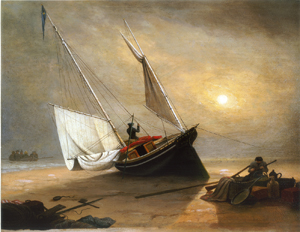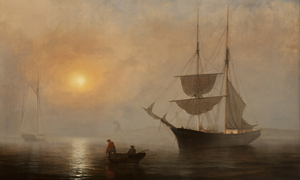An online project under the direction of the CAPE ANN MUSEUM
News
Sam Holdsworth and John Wilmerding »

Sam Holdsworth (left) and John Wilmerding (right) standing with Georgia Barnhill (Andrew W. Mellon Curator of Graphic Arts Emerita at the American Antiquarian Society) on October 27, 2017 at the Cape Ann Museum’s symposium hosted in conjunction with the exhibition “Drawn from Nature & On Stone: The Lithographs of Fitz Henry Lane.” Barnhill was the guest curator and John Wilmerding was the keynote speaker introduced by Sam Holdsworth. Watch a recording of the presentation here.
With great sadness, the Cape Ann Museum acknowledges the loss of two great scholars and friends of the Museum. Within May and June of 2024, Sam Holdsworth—Director of Fitz Henry Lane Online, CAM Board member, and painter—and John Wilmerding—renowned curator, professor, author and expert on Fitz Henry Lane—have passed away.
Their shared commitment to expanding the public’s knowledge and appreciation of 19th century American art, and specifically the work of Fitz Henry Lane (1804-1865), has had a giant impact on the Cape Ann Museum and the art world at large. Individually and collectively, their scholarship and focus on Lane and CAM's collection have brought much recognition to this humble institution. They paved the way for the Cape Ann Museum’s Fitz Henry Lane Online Catalogue Raisonné project and many dynamic opportunities yet to come.
Fitz Henry Lane was a meticulous observer of the world around him, gifting us centuries later with his accurate and stunning accounts of life on Cape Ann in the 1800s. Sam Holdsworth and John Wilmerding perfectly carried that torch of honoring both history and beauty in their steadfast attention to details and context, and appreciation of exquisite scenes.
Lecture at Cape Ann Museum — Painting the Inhabited Landscape: Fitz H. Lane and the Global Reach of Antebellum America »
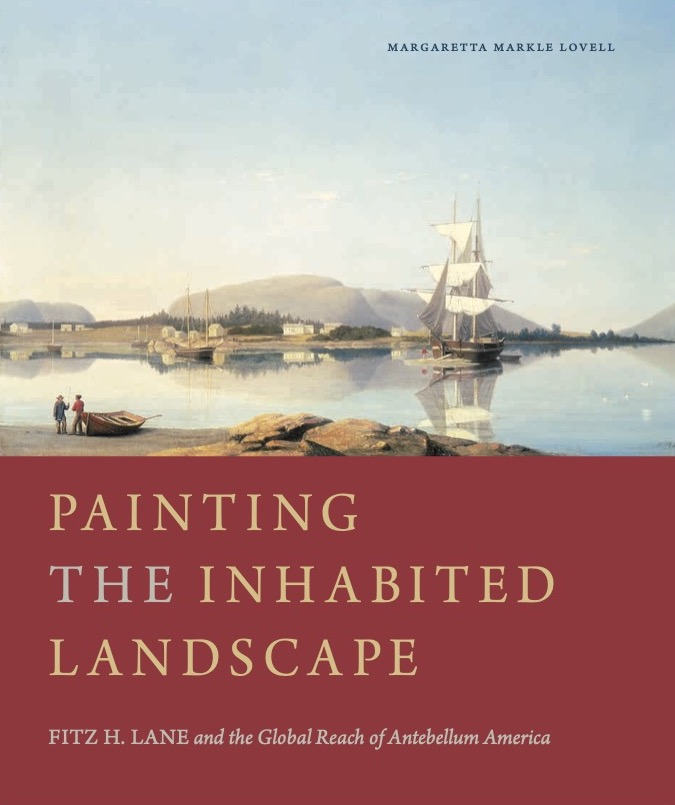
THURSDAY, JUNE 29, 2023 at 2:00 p.m.
CAMTalks: Exhibition Series—Painting the Inhabited Landscape: Fitz H. Lane and the Global Reach of Antebellum America
with Dr. Margaretta Lovell, Jay D. McEvoy, Jr., Professor of American Art History at the University of California, Berkeley
Calling attention to unexplored dimensions of nineteenth-century painting, Painting the Inhabited Landscape is a major intervention in the scholarship on American art of the period and an enlightening examination of Fitz H. Lane’s work.
In this important study, Margaretta Markle Lovell singles out the modestly scaled, explicitly inhabited landscapes of Fitz H. Lane and investigates the patrons who supported his career, with an eye to understanding how New Englanders thought about their land, their economy, their history, and their links with widely disparate global communities. Lane’s works depict nature as productive and allied in partnership with humans to create a sustainable, balanced political economy. What emerges from this close look at Lane’s New England is a picture not of a “virgin wilderness” but of a land deeply resonant with its former uses—and a human history that incorporates, rather than excludes, Native Americans as shapers of land and as agents in that history.
Margaretta M. Lovell is a cultural historian working at the intersection of history, art history, and material culture studies. Currently the Jay D. McEvoy, Jr., Professor of American Art History at the University of California, Berkeley, she received her PhD in American Studies at Yale. Her most recent book, Painting the Inhabited Landscape: Fitz H. Lane and the Global Reach of Antebellum America (Penn State Press, April 2023), concerns F. H. Lane, Cape Ann’s landscape painter who, in the first half of the nineteenth century, captured his culture’s relationship to fish, granite, and forests on one hand and its links to China, Puerto Rico, and Surinam on the other.
Registration required for all attendees. Learn more at the Cape Ann Museum website.
Mary Blood Mellen Exhibition at Cape Ann Museum »
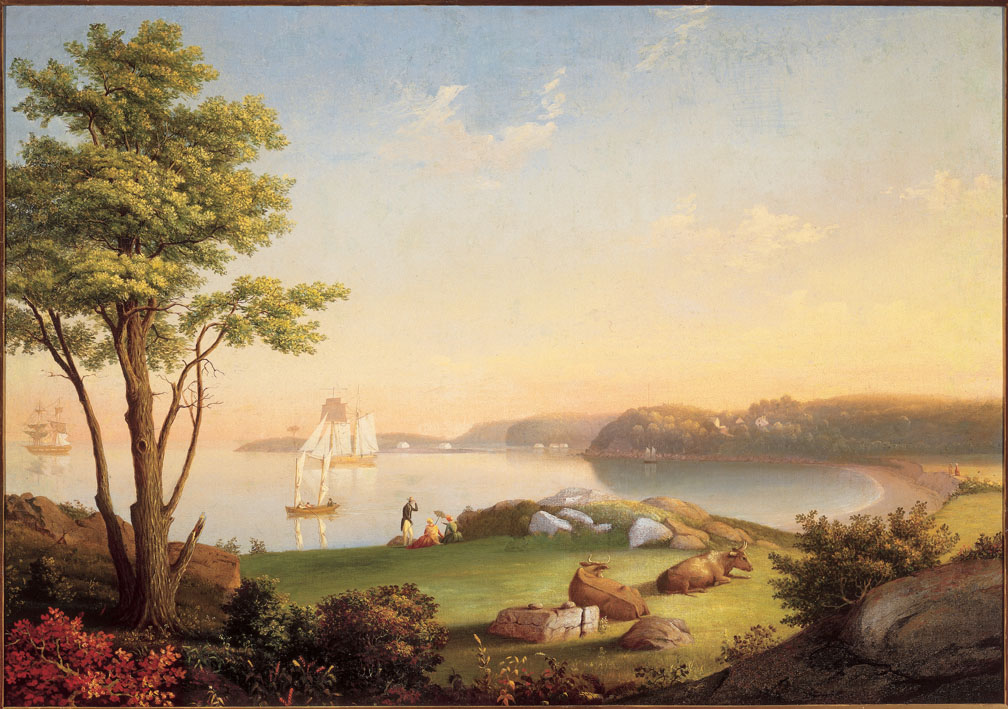
Mary Blood Mellen (1819-1886), Field Beach, Stage Fort Park, c. 1850s, Oil on canvas. Collection of the Cape Ann Museum, Gloucester, MA. Gift of Mrs. Preston Dise, 1964 [#1964].
Although often thought of in terms of her mentor, Fitz Henry Lane, Mary Blood Mellen (1819-1886) was a talented and accomplished artist in her own right who commands a place in the history of art on Cape Ann. To better understand Mellen and her artistic skills, the Cape Ann Museum is pleased to offer this special exhibition of her work, on view in the center of the Lane Gallery during Jan. 13, 2023 – April 2, 2023.
The details regarding Mary Blood Mellen’s life are well documented. Born in 1819, she grew up in central Massachusetts and in 1840, married Rev. Charles W. Mellen, a Universalist minister. Fifteen years later, Charles Mellen’s brother, who was also a minister, was called to serve at Gloucester’s First Universalist Church. It was probably because of that posting that Mary Blood Mellen visited Gloucester and established a friendship with Fitz Henry Lane. Information gleaned from a variety of sources tells us that Mellen quickly became Lane’s student and collaborator; indeed, Lane gave her access to his preliminary drawings and allowed her to assist him on at least one of his canvases. Stylistic examination of numerous Lane paintings in the Cape Ann Museum’s collection suggests that she may have had a hand in many of them.
As additional works by Mellen come to light, it is possible that more will be learned about her artistic career. It is equally possible, however, that we may never know the details of Lane and Mellen’s relationship and their artistic collaboration.
Learn more in an exhibition catalogue found here.
Unfurling Fitz Henry Lane »
Unfurling Fitz Henry Lane from Cape Ann Museum on Vimeo.
Fitz Henry Lane’s paintings are transcendental works of light and air. But they are also treasured accounts of Gloucester’s fishing and trade industries. Erik Ronnberg is a master ship model maker, renowned maritime historian, and Maritime Curator at the Cape Ann Museum, which created the Fitz Henry Lane Catalogue Raisonné. Erik Ronnberg has been critical to expanding the Catalogue Raisonné into almost a three-dimensional experience of mid-19th century Gloucester.
Watch this short film exploring how Fitz Henry Lane’s and Erik Ronnberg’s meticulous attention to detail bring 19th century Gloucester to life.
Unknown Lane Watercolor Discovered at an Auction in Belgium »
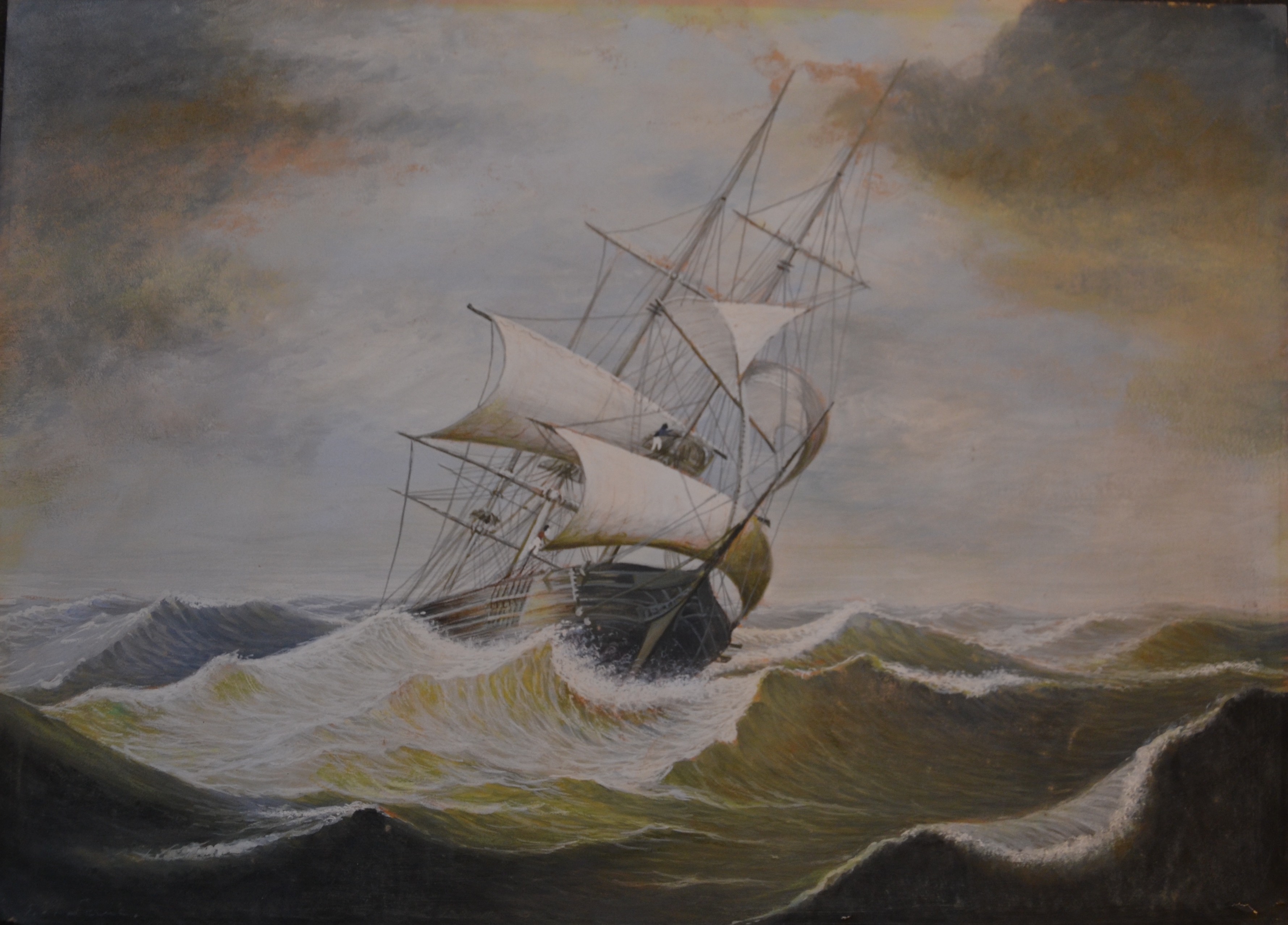
Three Master in Rough Seas (Watercolor), c.1856 (inv. 795)
This work is a recent discovery as of 2022, a slightly smaller watercolor version of the dynamic small oil, Three Master in Rough Seas, 1856 (inv. 4), in the collection of the Cape Ann Museum. This painting was acquired at a recent auction in Belgium as an unknown work. Gallery labels on the back show that it was at some point sold through the Max Bine Gallery in Paris which was active from 1914–1930. Lane did very few watercolors; we have not seen him use the medium as preparatory works for oils where one would expect a looser technique as he worked out ideas. The brushwork here is very precise and he doesn’t use washes or scumbles as is typical in preparatory works. He appears to be copying his oil original as the composition and details precisely follow the oil painting.
The original oil went directly from Lane’s studio to the Stacy family in Gloucester where it descended until given to the Cape Ann Scientific, Literary and Historical Association in 1948. This watercolor version is unrecorded—perhaps Lane did it for a friend as all his commissions we know of were for oil paintings, as was typical of the time. The paper is a fairly smooth, off-white paper, not a heavy or wove paper as one would expect for a watercolor commission. It is painted right to the edges of the paper, again atypical of a commission, where a border would be expected as Lane used in the watercolor Shooting Seabirds, c.1842 (inv. 789). How it got to Paris in the early 1900s remains a mystery.
– Sam Holdsworth
Laid Down on Paper, Printmaking in America, 1800-1865 awarded the 2021 Ewell L. Newman Book Award, American Historical Print Collectors Society »
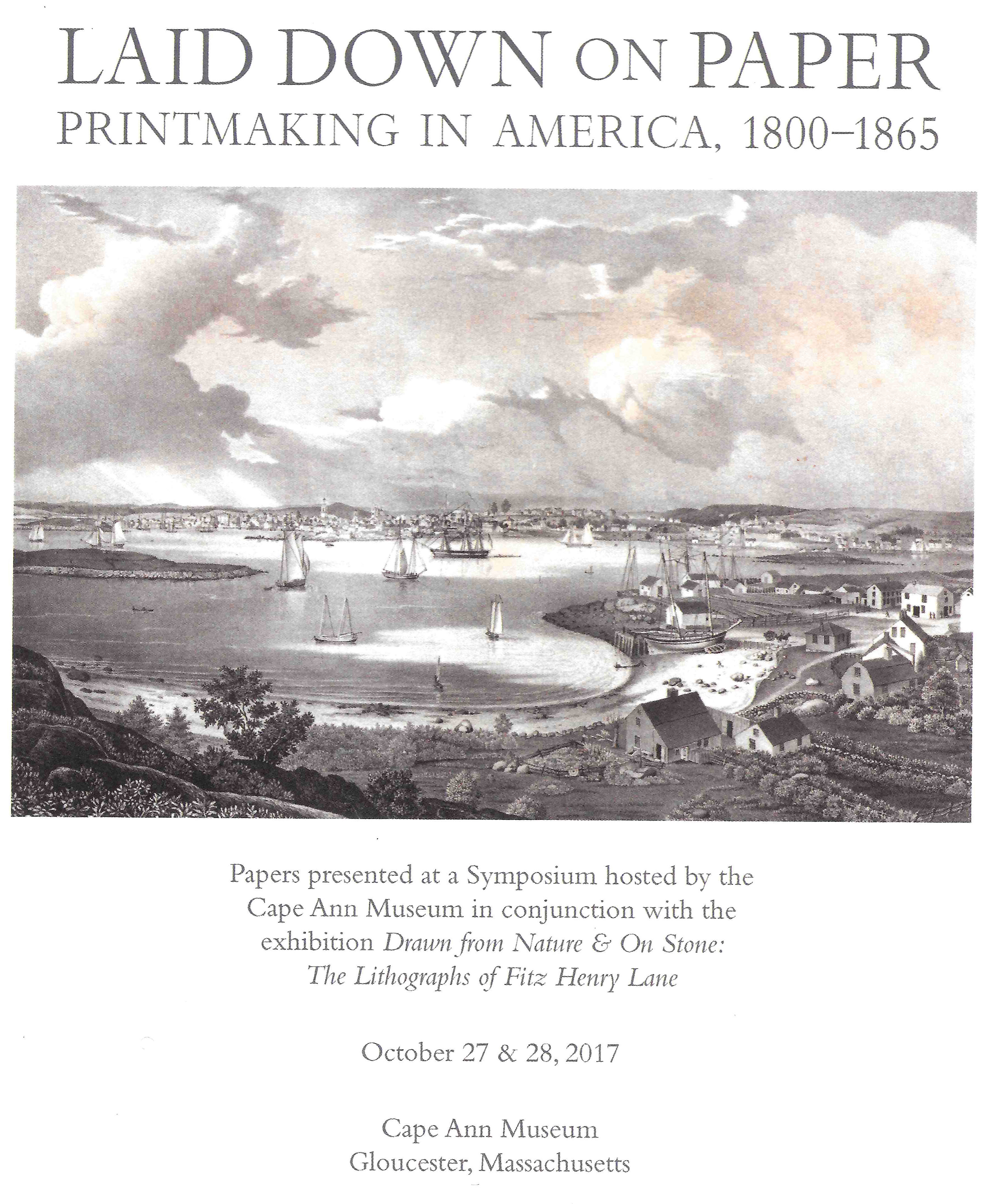
Laid Down on Paper, Printmaking in America, 1800-1865 has been awarded the 2021 Ewell L. Newman Book Award by the American Historical Print Collectors Society. Published by the Cape Ann Museum in 2020, the book contains papers presented at a symposium organized in conjunction with the Museum’s 2017 exhibition, Drawn from Nature & On Stone: The Lithographs of Fitz Henry Lane. The Award is given annually and recognizes outstanding publications that enhance appreciation of American prints and printmakers.
Fitz Henry Lane has long been recognized as one of America’s most important painters of the mid-19th century. Lane’s success as a printmaker, however, and his life-long fascination with the medium is something that is not widely recognized. The exhibition catalogue of the show and the recent book Laid Down on Paper, Printmaking in America 1800-1865 investigate this important part of Lane’s career. The essays in Laid Down on Paper explore such diverse topics as how race and race relations were portrayed in printing in the period following the issuance of the Emancipation Proclamation in January 1863; the role women artists and artisans played in printmaking during the nineteenth century; and how the rise of industrialization in towns such as Lowell and Lawrence, Massachusetts, affected the careers of Fitz Henry Lane and other printers.
Laid Down on Paper contains essays by seven print scholars: Helena E. Wright; Marie-Stéphanie Delamaire; Joan Irving; Rebecca Szantyr; Ellen R. Sondag; Christine Garnier; and Margaretta M. Lovell. The introduction was written by Georgia B. Barnhill, curator of the Lane lithograph exhibition; Caroline Sloat served as editor.
Copies of Laid Down on Paper are available through the Cape Ann Museum Shop. The exhibition catalog which accompanied the exhibition Drawn from Nature & On Stone: The Lithographs of Fitz Henry Lane is also available through the Museum Shop.
– M. Oaks
August 5, 2021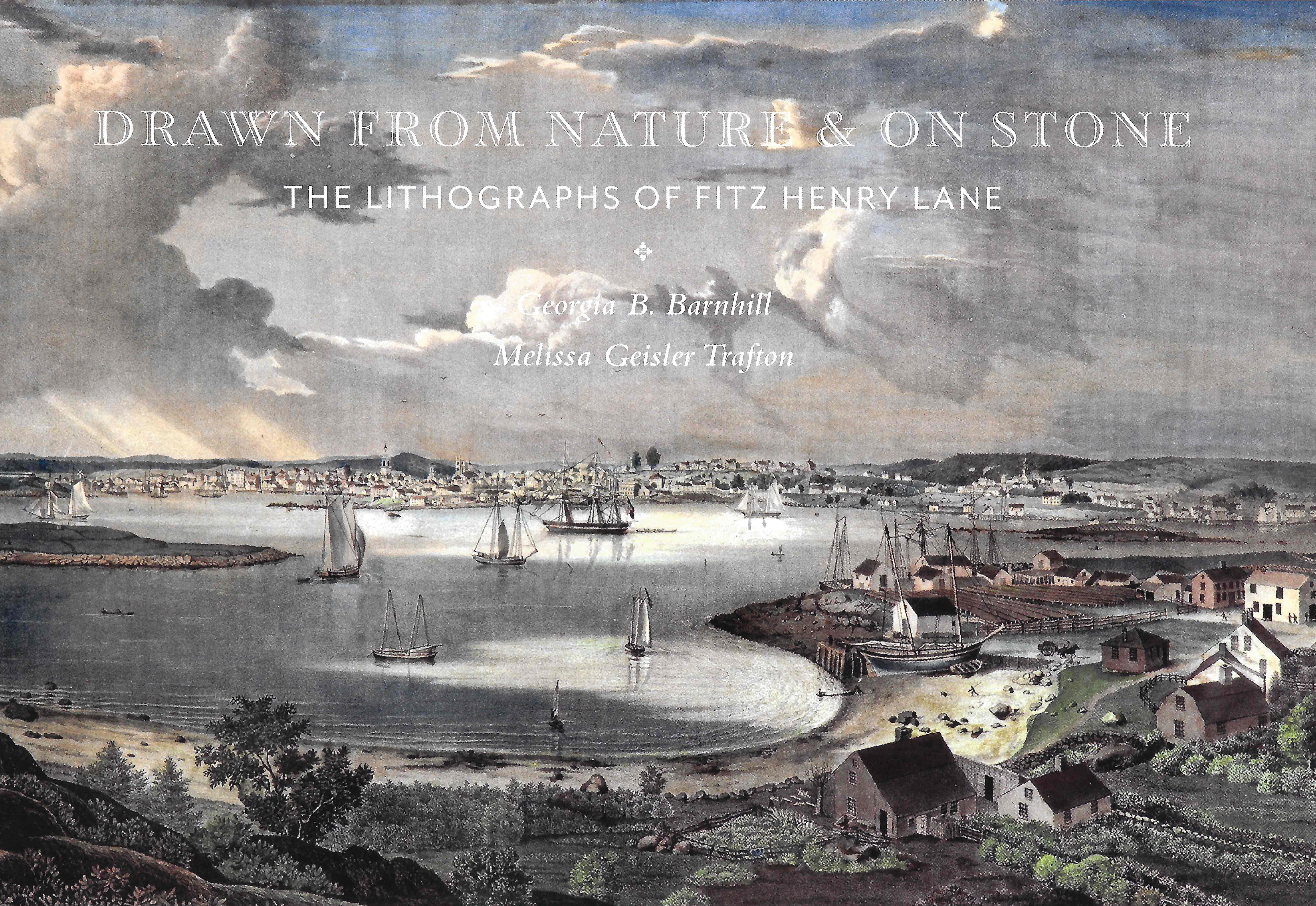
Two Unusual Hunting Scenes: Lane's Early Watercolor Shooting Seabirds (1842) and Rafes Chasm (1853), Oil on Canvas »
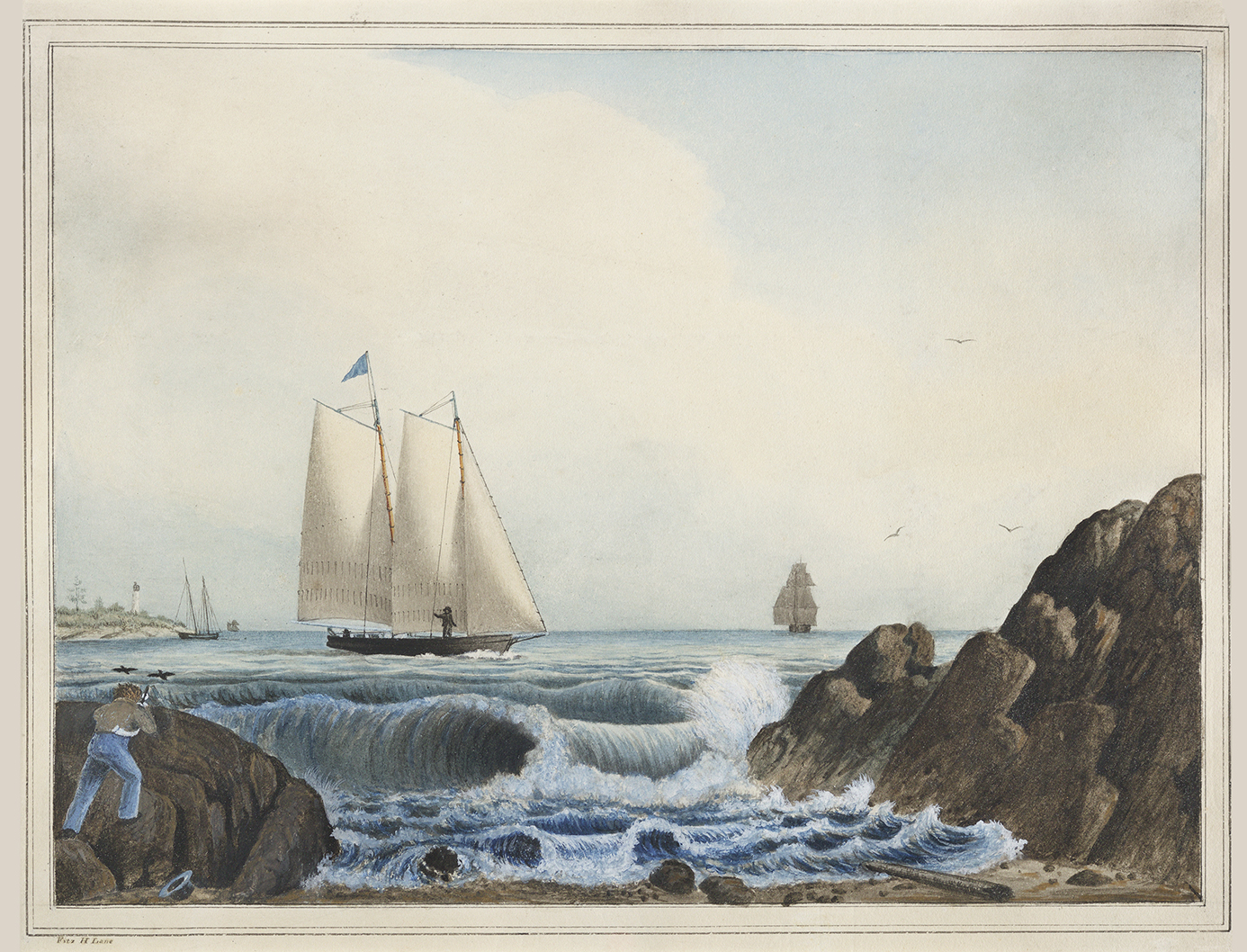
Shooting Seabirds, c.1842 (inv. 789)
This exquisite early watercolor is one of only several we know by Lane. It is relatively small, 8 1/2 inches by 10 1/2 inches and is dated 1842. Lane was still working as a lithographer in Boston and is clearly employing those same techniques here with careful outline drawing and literal coloring. At first look it could be mistaken for a hand-colored lithograph. The work is signed on the front and is inscribed on the back, “John S. Chase Esq. Presented by Mr. Geo Parker, March 21, 1842.”
The site is likely a view from the Magnolia shore on the west side of Gloucester’s outer harbor looking east across to the Eastern Point lighthouse and the open ocean beyond. There is a wonderful primitive quality to the scale and perspective of the boats and the stylized drawing of the breaking waves. Lane has given equal emphasis to all elements of the composition, and while the coloring is quite literal he has created a lovely harmony with the various blues employed across the composition. It is a calm and jewel-like work with the innocent charm of 1840s America.
Lane’s growth in sophistication over time is clearly evident in a very similar scene from the same coast eleven years later, Rafes Chasm, 1853 (inv. 597), a relatively large oil on canvas, 34 1/4 x 48 1/4 inches. Here the drama of the sky and sea is rendered in Turner-like explosions of foam and sunlight nearly obscuring the small figure of the hunter in the foreground.
–Sam Holdsworth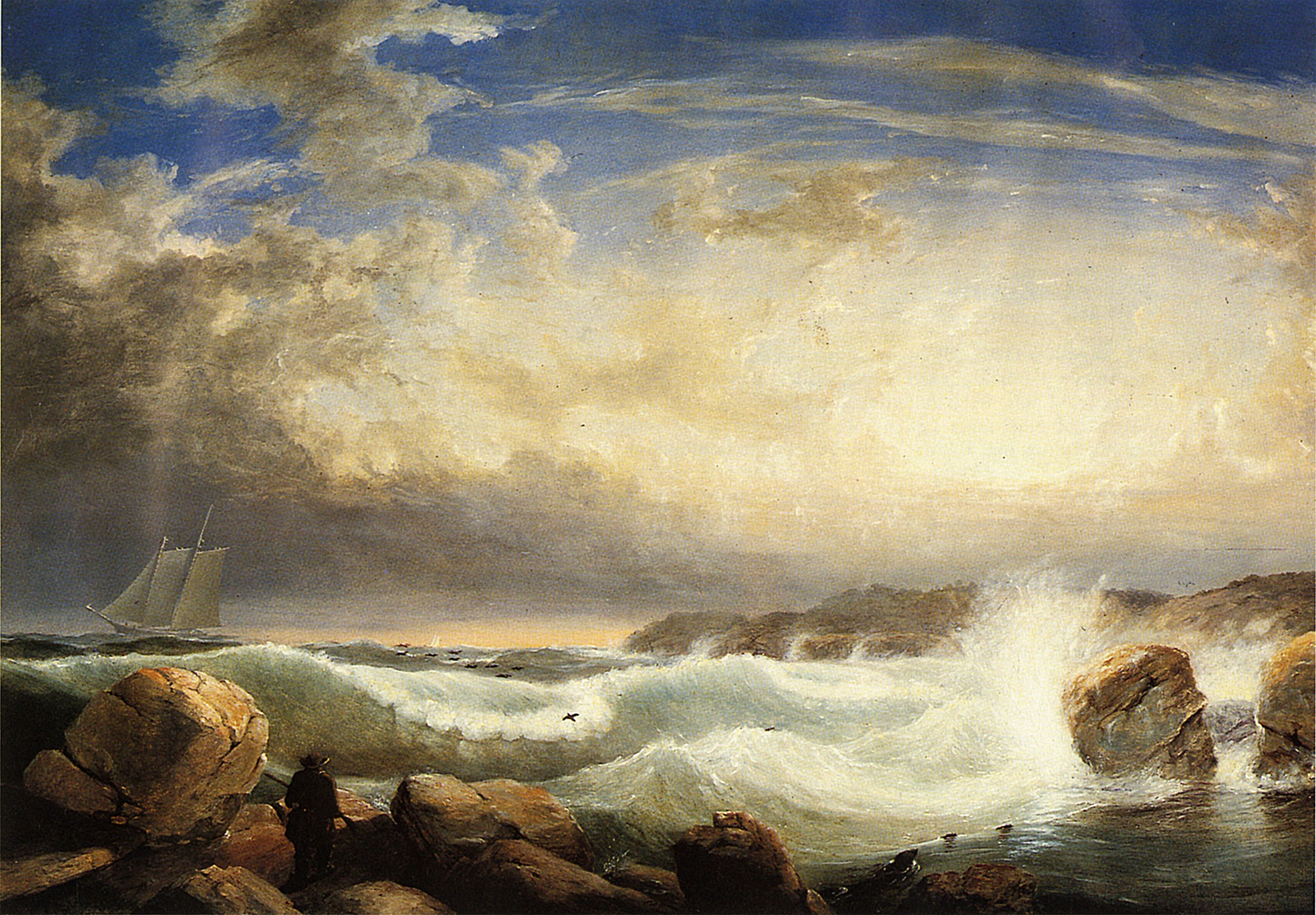
Rafes Chasm, 1853 (inv. 597)
F.H. Lane's First Complete Lithography Exhibition at the Cape Ann Museum »
Drawn from Nature & on Stone: The Lithographs of Fitz Henry Lane
OCT. 7, 2017—MARCH 4, 2018
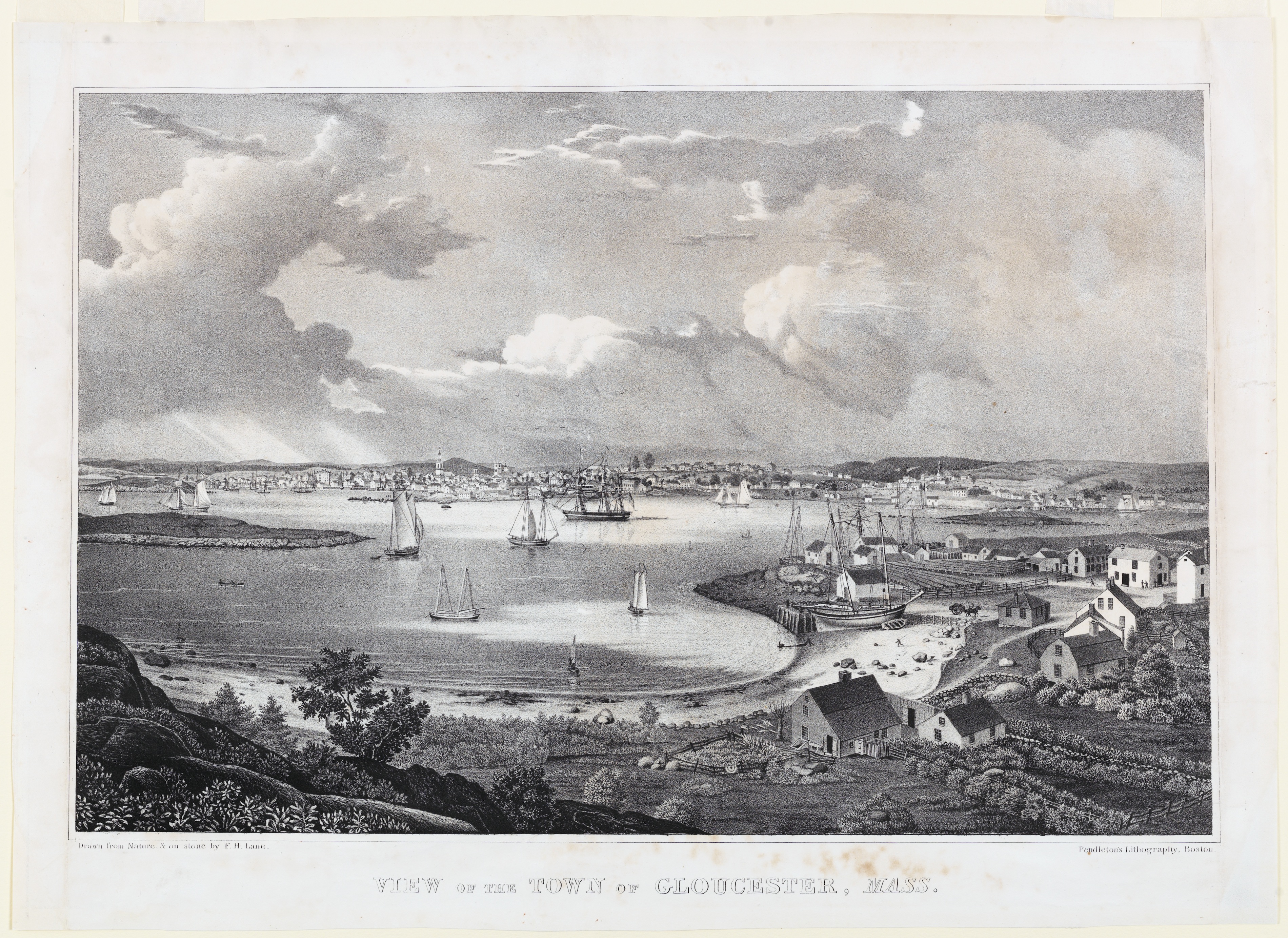
New Discoveries: Lane Pendants Descended in New England Family »

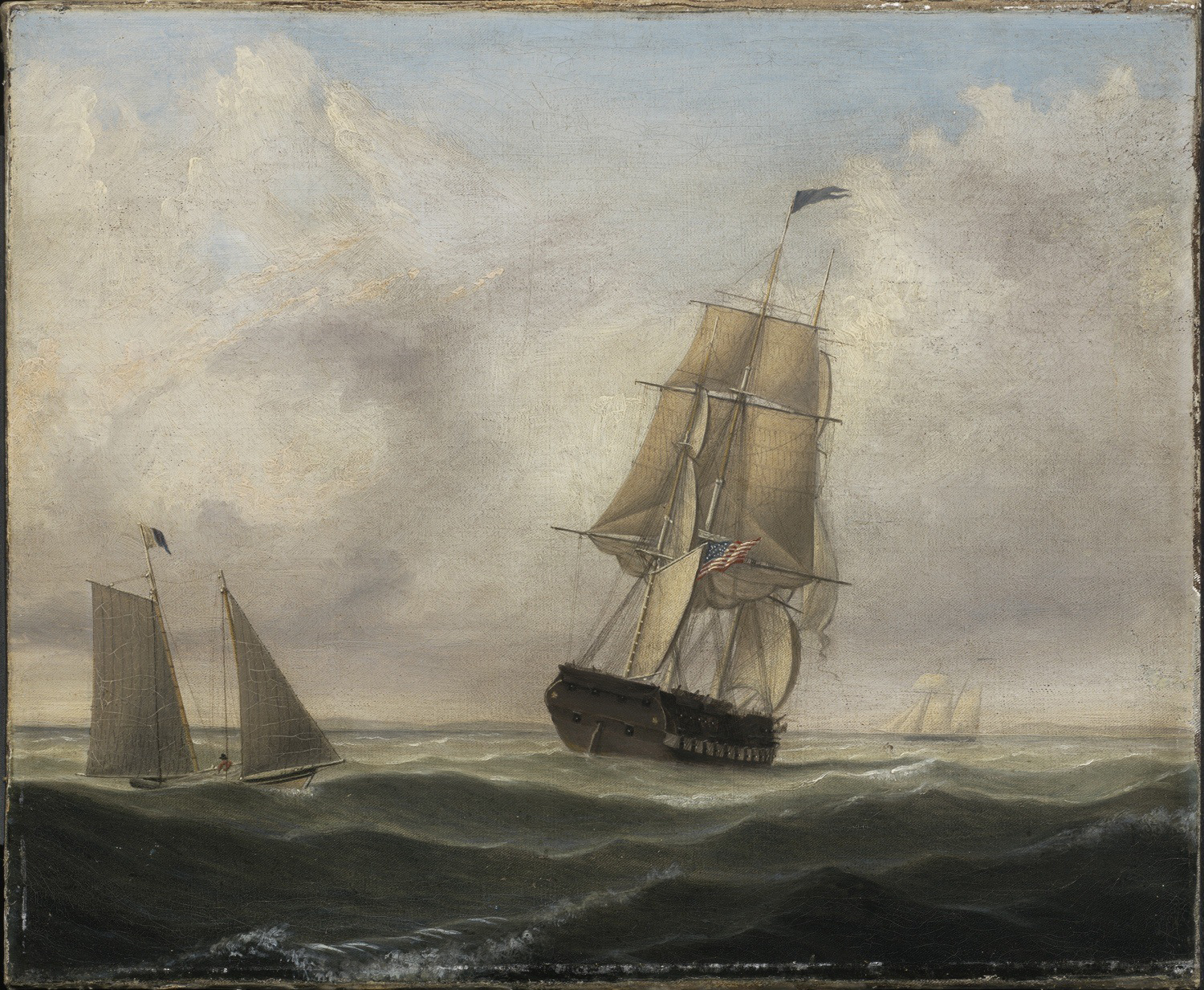
A pair of Lane marine paintings with a fascinating provenance has surfaced through an old New England family with maritime ties to the brothers Robert B. and John M. Forbes. The paintings (Pilot Pendant: Approaching (inv. 296) and Pilot Pendant: Departing (inv. 297)) are clearly pendants, a pair intended to be displayed together. They are quite small, 17” by 14”, and were likely inset into wall paneling, perhaps on either side of a fireplace.
Fitz Henry Lane Online Adds Image Comparison Tool »
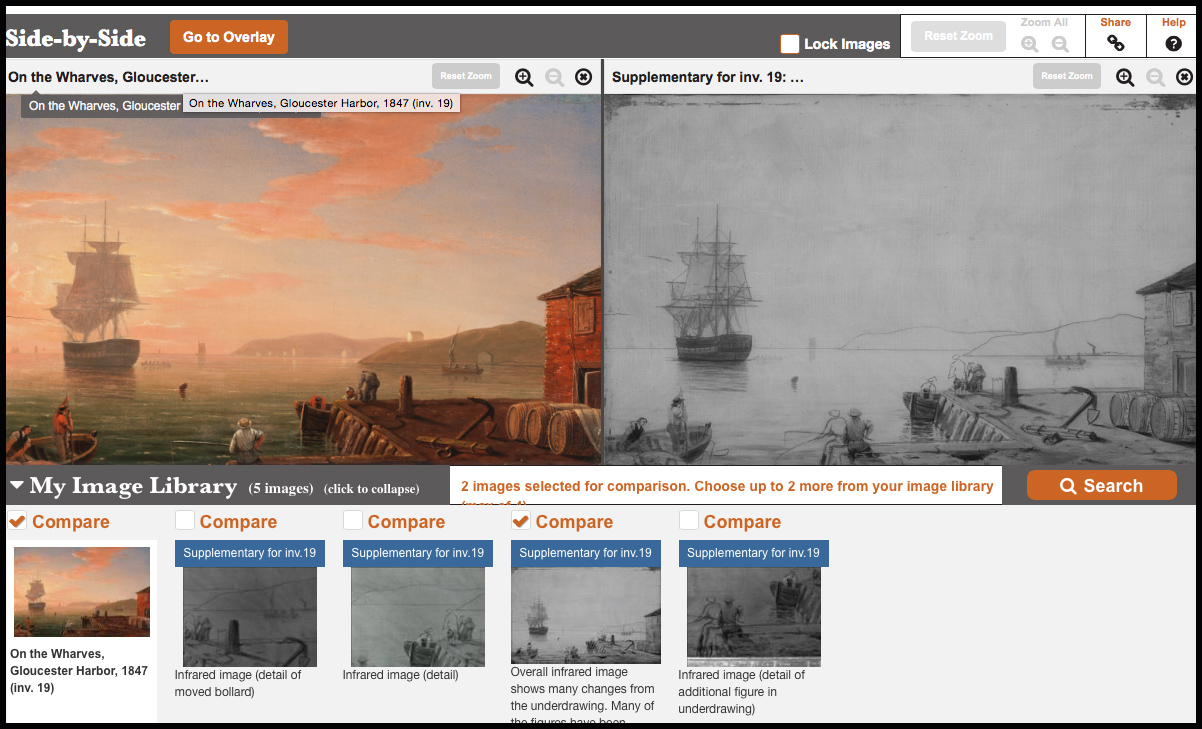
Example of the Image Comparison Tool being used in Side-by-Side mode to compare Gloucester Harbor, 1852 (inv. 38) with the infrared image. Up to four images can be compared simultaneously.
Northshore Magazine Features Fitz Henry Lane Online »
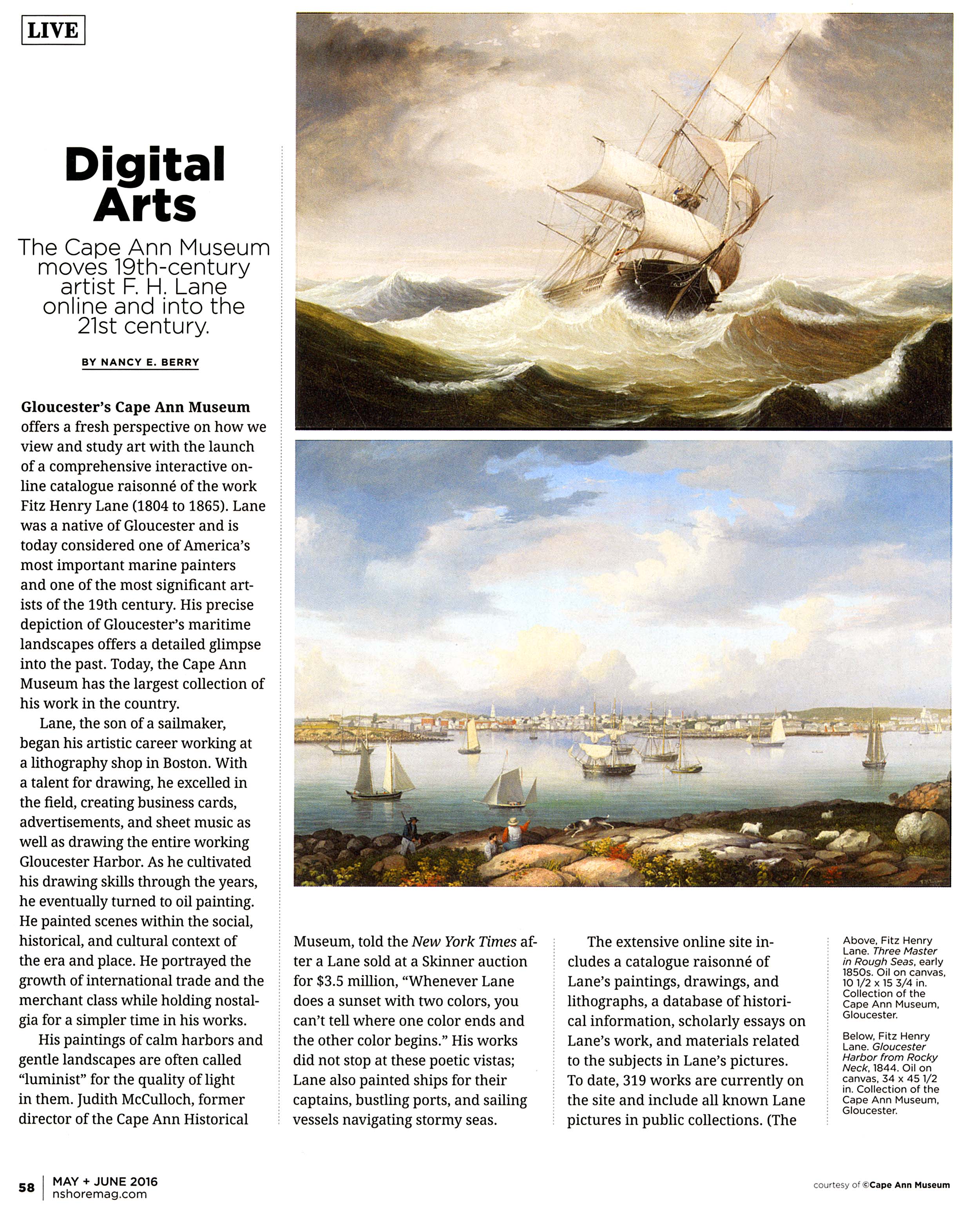
 Announcement in NorthShore Magazine, May/June 2016.
Announcement in NorthShore Magazine, May/June 2016.
New Discoveries: "Phantom of Boston" Donated to the Cape Ann Museum »
Museum Acquisitions: Ships in Fog on Display at the Princeton Art Museum »
The Princeton University Art Museum has just acquired Fitz Henry Lane’s Ships in Fog.
In 2015, the Princeton University Art Museum acquired this picture, one of Lane’s rare fog paintings. It had been in a private collection for many years and has rarely been exhibited, but is currently on display at the museum in Princeton, N.J.
